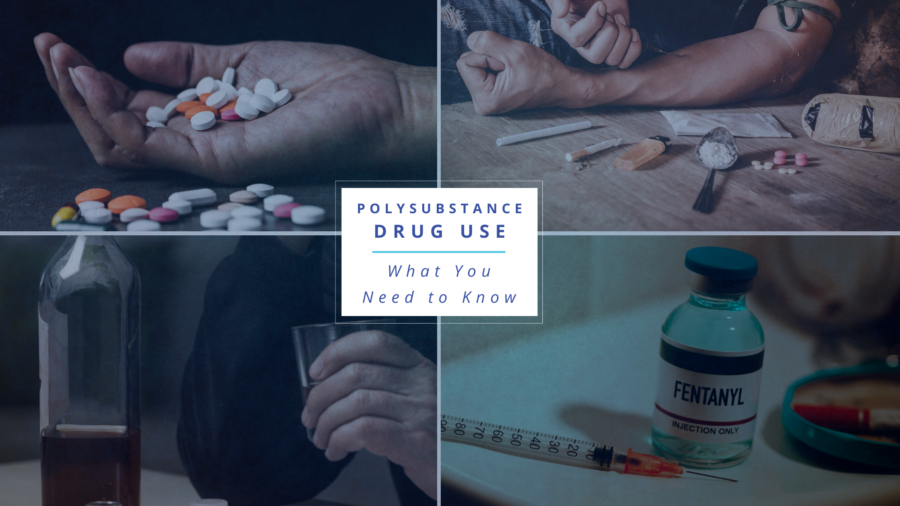The use of more than one drug, also known as polysubstance use, is common. This includes when two or more substances are taken together or within a short time period, either intentionally or unintentionally. Intentional polysubstance use occurs when a person takes a drug to increase or decrease the effects of a different drug or wants to experience the effects of the combination. Unintentional polysubstance use occurs when a person takes drugs that have been mixed or cut with other substances, like fentanyl, without their knowledge. Whether intentional or not, mixing drugs is never safe because the effects from combining drugs may be stronger and more unpredictable than one drug alone, and even deadly .1
In 2019, nearly half of drug overdose deaths involved multiple drugs.1
There are many reasons people mix drugs. According to the Alcohol and Drug foundation, people may mix drugs:
- to ‘bring’ on or enhance the desired effects of one drug, such as drinking alcohol while using stimulants
- to stop or decrease the negative effects of a drug, such as using depressants like cannabis or benzodiazepines to reduce the impact of coming down from stimulants
- substituting a drug of choice for an alternative; for example, being unable to access heroin and substituting it with alcohol and cannabis instead
- when a person is intoxicated by alcohol or other drugs and they take another drug without thinking about or considering the effects
- to reduce dependence on one drug by using a combination of others.2
Polysubstance use doesn’t just apply to recreational substances. Over the counter (OTC) and prescription drugs can also have risks when combined. For this reason it is important for healthcare providers to have a complete understanding of all medications and supplements a patient may be taking.
Polysubstance use may affect everyone differently. This can be due to variations in: size, weight and health, whether the person is used to taking the combination of drugs, the amounts taken, the strength of the drugs (varies from batch to batch for each illegally produced drug) and if alcohol or medications are consumed as well.2
It is difficult to predict the effects of one drug, but it is even harder to predict the effects of multiple drugs. Taking multiple drugs of the same class (such as two stimulants) increases the impact on the brain and body and overdose can occur. Effects become even more complicated to predict if different classes of drugs are taken. For example, taking a stimulant with a depressant.2
It is important to note that drugs taken in combination increase the risk of harm.
There is no safe level of drug use. Use of any drug always carries some risk. It is important to be careful when taking any type of drug.2
At Genesis Reference Laboratories, we offer robust drug toxicology testing to aid in the detection of polysubstance use. Our drug testing services allow clients the ability to detect many top prescribed medications and a significant number of recreationally used substances. Please reach out to your local Genesis representative or call (844) 510-0194 to learn more about how we can help providers and patients.
References
- https://www.cdc.gov/stopoverdose/polysubstance-use/index.html
- https://adf.org.au/reducing-risk/polydrug-use/

